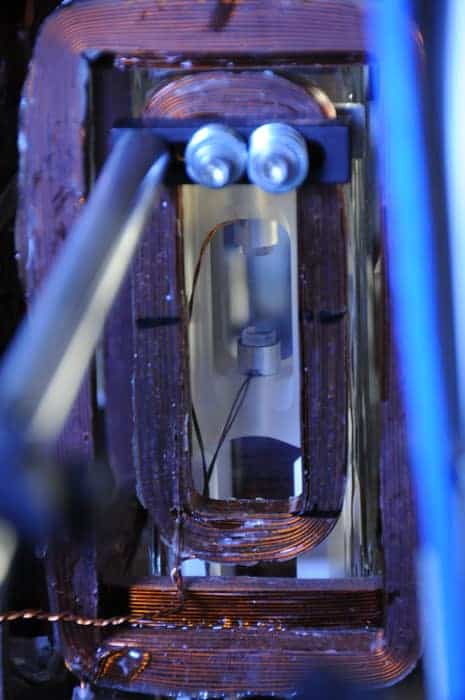Subradiance stores light in dense atomic clouds
24 May 2021
Subradiance, whereby excited atoms decay more slowly than usual, has been spotted in a dense atomic cloud for the first time. Giovanni Ferioli and colleagues at the University of Paris-Saclay prepared longer-lived “subradiant” atomic states using optical tweezers and laser pulses. With further improvements their technique could have applications in optics and quantum computing.
An atom in an excited state will decay back into its ground state by spontaneously emitting a photon. In 1954, the American physicist Robert Dicke showed that this decay process can be enhanced within dense ensembles of atoms where the average atomic separation is smaller than the wavelength of the emitted photon. Through this effect of superradiance, photons emitted by the atoms constructively interfere with each other resulting in a burst of light that is shorter and more intense than would occur if the decays occurred independently,
More recently, physicists have discovered that the opposite effect called subradiance can also occur. Here, emitted photons destructively interfere with each other, inhibiting the decay of excited states. While subradiance has been seen in dilute atomic ensembles and ordered atomic arrays, it had not been observed before in dense clouds of atoms.
In a pinch
Now, the Paris team has seen subradiance within dense, disordered clouds of cold rubidium atoms, which were confined within an optical-tweezer trap. After being excited by a laser pulse, the rubidium atoms decay rapidly at first because the laser mostly couples to superradiant states. Over time, however, subradiance emerges through a combination of two mechanisms. First, the weakly-excited subradiant states of the atoms far outlive their superradiant states, and eventually came to dominate the cloud’s overall emission. Second, a certain fraction of the superradiant states will leak into subradiant states.READ MORE

Together, these factors lead to a long tail of emission that persists after the excitation has occurred. The team also observed that the lifetime of the subradiance increases as more atoms are added to the cloud.
By increasing the intensity of their laser pulse, Ferioli’s team could put the atoms into a quantum superposition of excited states. While initially decaying via superradiance, these multiple states can eventually become trapped in a “dark” state; with destructive interference preventing further decays. The researchers showed that firing a subsequent laser pulse at the atoms can cause the cloud to emerge from its dark state and release a sudden burst of light.
In the future, Ferioli and colleagues hope to gain more control over the lifetimes of their excited atoms. If achieved, this could enable researchers to prepare long-lived and highly reliable networks of entangled atoms. This could lead to applications in areas including optics, metrology and quantum computing.
The research is described in Physical Review X.
Sam Jarman is a science writer based in the UK
from physicsworld.com 14/11/2021

Δεν υπάρχουν σχόλια:
Δημοσίευση σχολίου